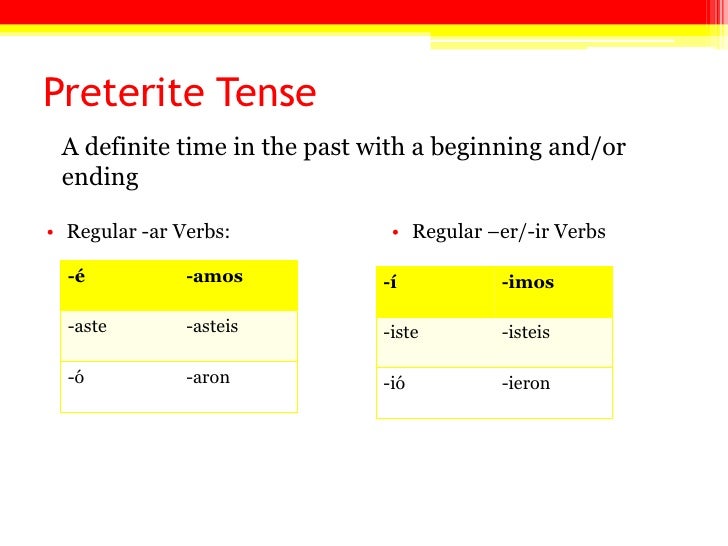

⇒ Instead what is effected is the durative nature of the event being described. ⇒ When it comes down to it, the inherent meaning of the verb (from the perspective of a Spanish speaker) does not change with a change in aspect. These tenses include the simple present tense, the imperfect tense, progressive tenses, the conditional tense, and the future tense. Tenses in the imperfective aspect describe events that are ongoing or habitual in relation to the temporal reference point. Imperfective is just an equally fancy way of saying that a verb describes an action that is considered incomplete or ongoing in the time referenced in the sentence.These tenses include the preterite tense and all perfect tenses. Put another way, the perfective aspect is used in tenses that describe singular events that occur (initiate and/or terminate) at the temporal reference point in the sentence. Perfective is just a fancy way of saying that a verb describes an action that is considered complete at or by a certain time.

Spanish verbs come in three categories ( -ar, -ir, and -er) and change (conjugate) according to who performed it and when the action occurred. The preterite is used to describe actions which have been completed. ⇒ Some Spanish verbs have different meanings depending on whether they are perfective or imperfective. The Spanish preterite tense is one of five forms used to describe actions or events that occurred in the past.


 0 kommentar(er)
0 kommentar(er)
